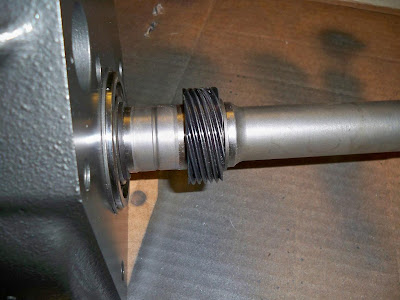I can't seem to select the proper speedometer gear. I learned the speedometer in the Mustang was incorrect early on. I've tried three different speedometer gears but have had no luck.
My Mustang has a 3 speed toploader transmission (1:1 final gear), 3.25 rear gears, and 25.5" tall rear tires. As seen in the picture below, the internal transmission speedometer gear has 6 teeth.

According to NPD, the first step is to calculate tire revolutions per mile using the following calculation:
63360/(3.1415*tire diameter) = tire revolutions per mile
63360/(3.1415*25.5)
63360/80.108
790.9298 tire revolutions per mile
I then insert tire revolutions per mile into the following calculation to determine the speedometer gear needed:
(# drive teeth X rear gear ratio X tire revolutions per mile) / 1000 = speedometer gear teeth
(6 X 3.25 X 790.9298) / 1000
15423.13 / 1000
15.423
I started off today with a 18 tooth speedometer gear which was obviously not correct. Using some online calculators, I found I should be at 3,000 RPM at 70MPH. With the 18 tooth gear, when the speedometer stated I was going 70, I was at 2650 RPM. With a 16 tooth gear, when the speedomter stated I was going 70, I was at 2400RPM. While the calculator states the speedomter gear should be have fewer teeth, my test seem to indicate that is taking me in the wrong direction.
